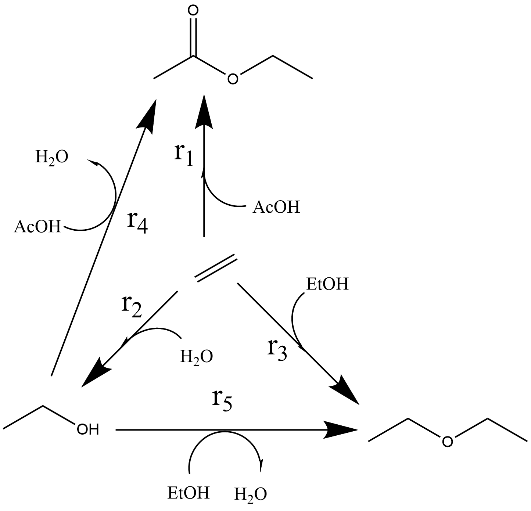(532cs) Novel Kinetic Model for the Ethyl Acetate Synthesis By Direct Addition on a Silicotungstic Acid Catalyst.
AIChE Annual Meeting
2022
2022 Annual Meeting
Catalysis and Reaction Engineering Division
Poster Session: Catalysis and Reaction Engineering (CRE) Division
Wednesday, November 16, 2022 - 3:30pm to 5:00pm
A kinetic model for the direct addition reaction focusing on the main products was developed based on a simple mechanism in which six reacting components, i.e. ethylene, acetic acid, water, ethyl acetate, ethanol and diethyl ether, are converted into each other via five reactions (See figure). The non-idealities of the gas phase, due to presence of acetic acid, were captured by the Hayden and O’Connell equation of state. Reactions are described according to Langmuir-Hinshelwood and Eley-Rideal type mechanisms, where adjustable parameters were determined by regression to experimental data. The model was improved by accounting for the dehydration of silicotungstic acid by water and clustering of protons with ethanol.
The kinetic model can simulate the effects of operating conditions, i.e. space time, temperature, pressure and feed composition, on conversions and selectivities to the main products (ethyl acetate, ethanol and diethyl ether) well, which is essential to consider predictions trustworthy. The model can be implemented in state-of-the-art process modeling software packages to simulate the performance and identify better operating points for ethyl acetate production plants that apply the direct addition technology. Hence, the kinetic model is a viable tool to optimize the performance of the production plants.
